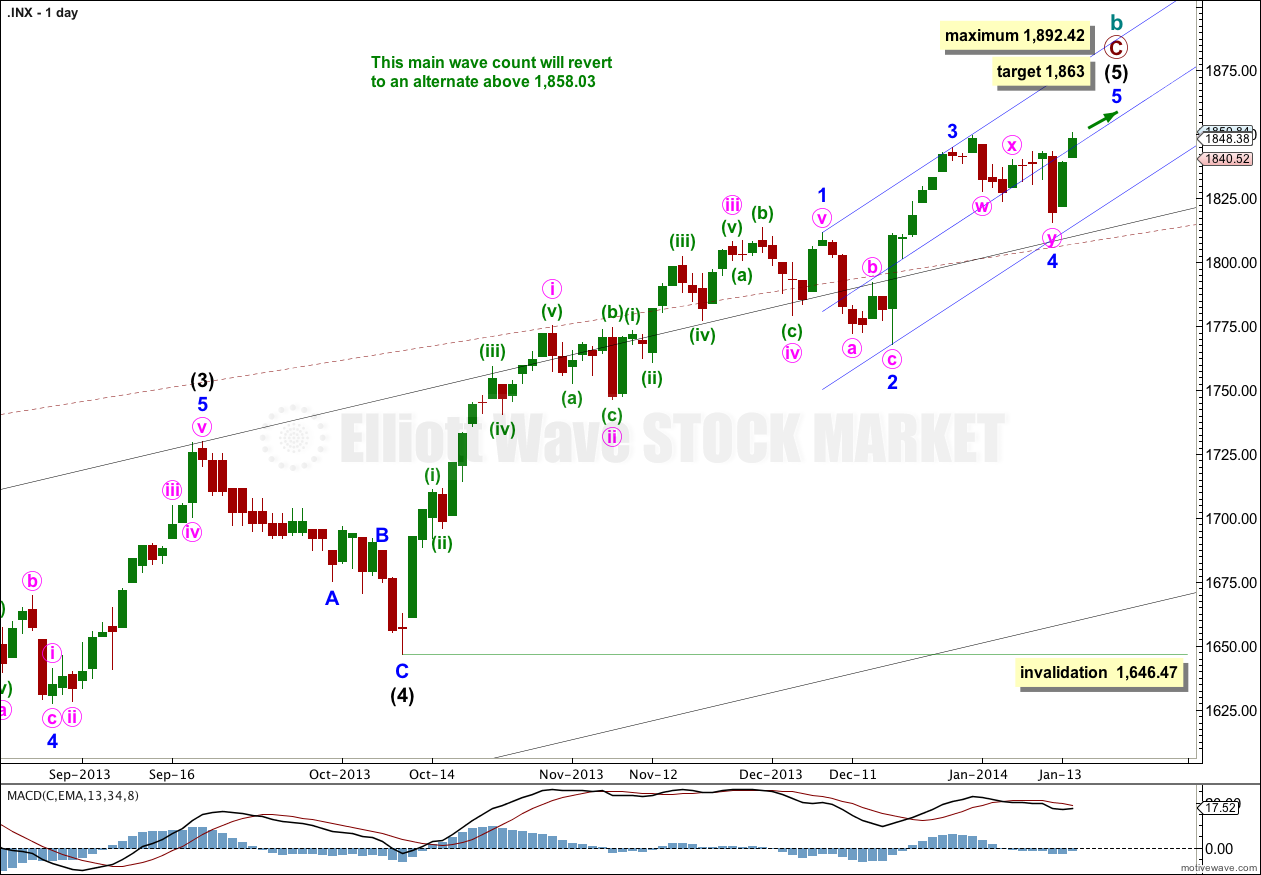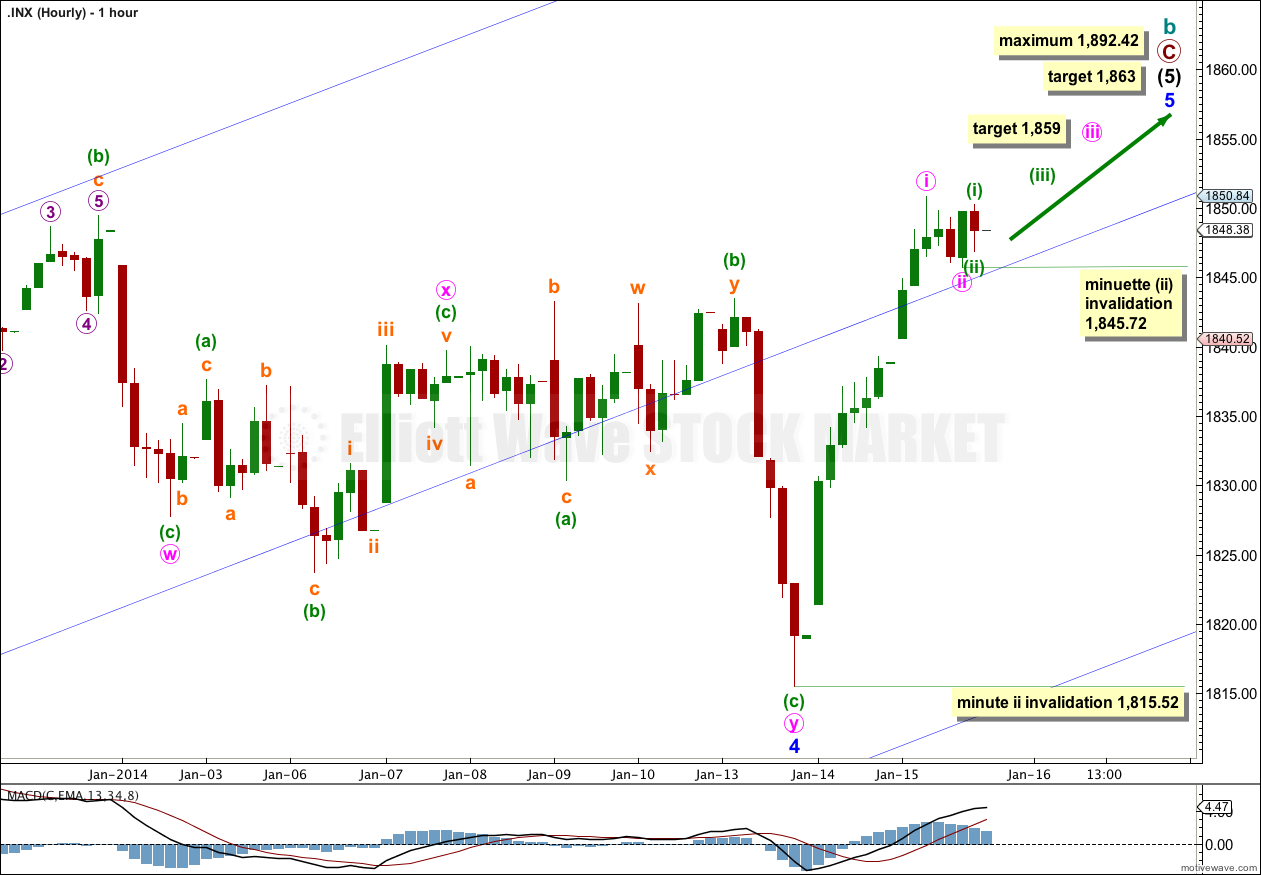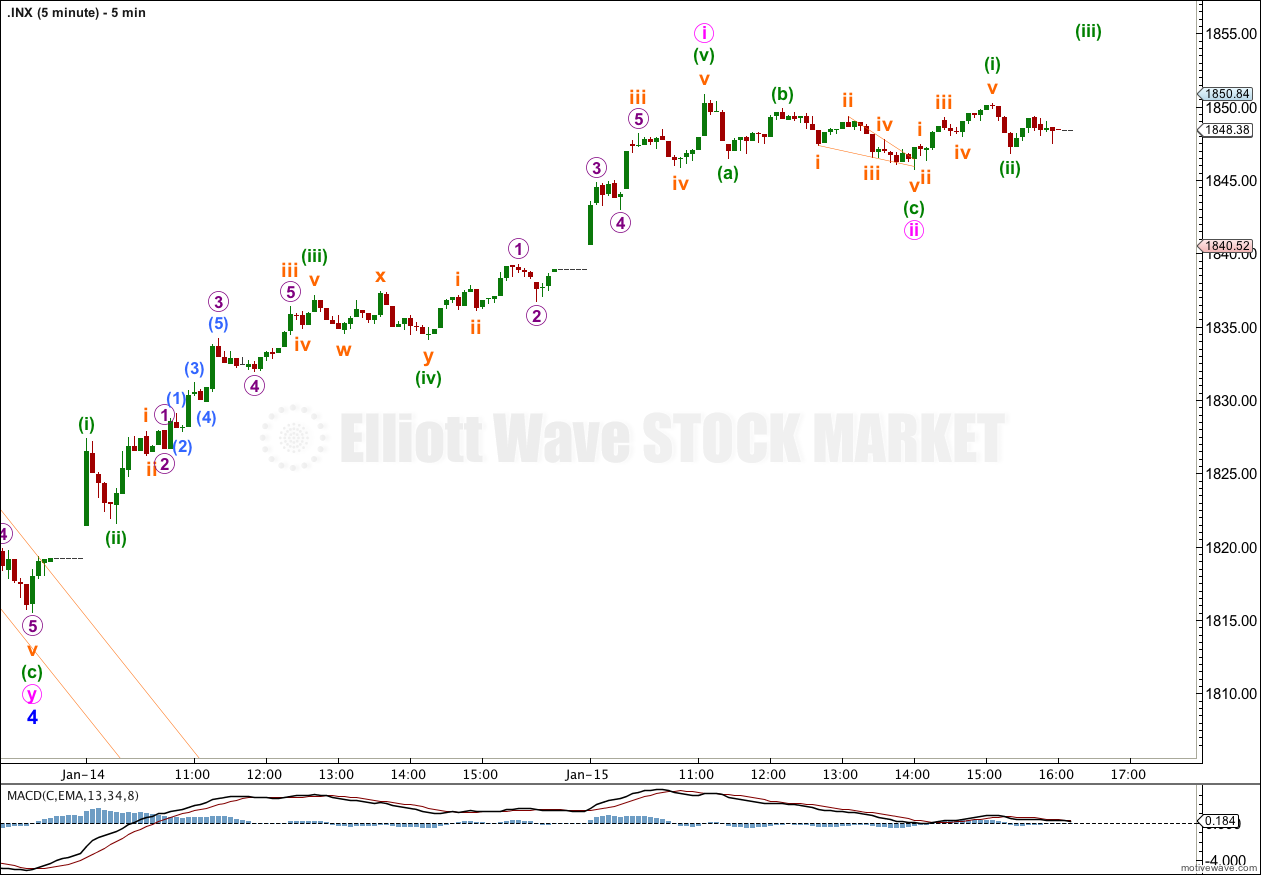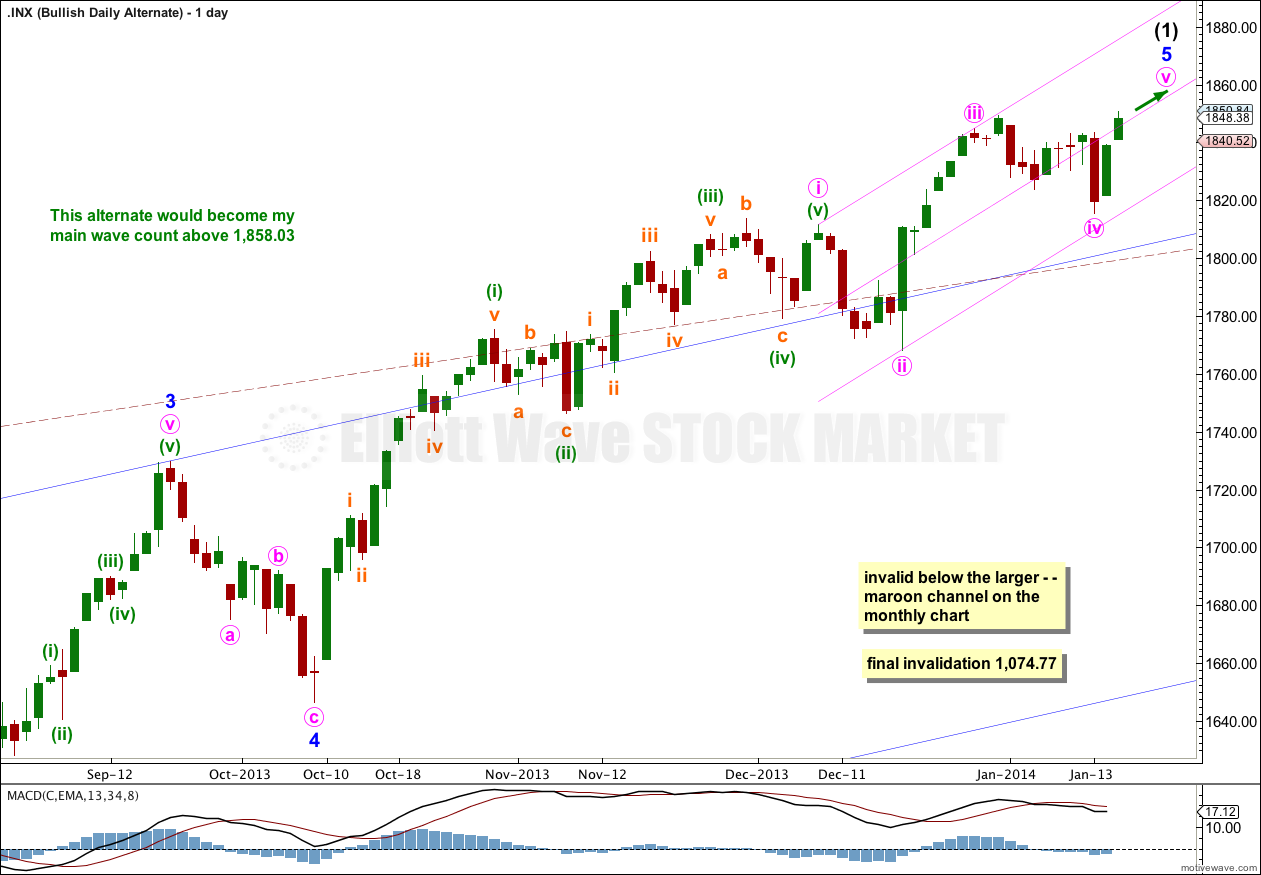Yesterday’s analysis expected more upwards movement for Wednesday which is exactly what has happened.
The wave counts remain the same.
Click on the charts below to enlarge.
Main Bearish Wave Count.
This wave count has a higher probability than the bullish alternate. Upwards movement over the last 4 years and 10 months subdivides best as a zigzag. If something is “off” about the supposed recovery then it must be a B wave because there is plenty that is off in this scenario in terms of social mood.
Minor waves 1, 2, 3 and 4 are now complete.
At 1,863 minor wave 5 would reach 0.618 the length of minor wave 3. Minor wave 5 is limited and may not be longer than equality with minor wave 3 because the third wave may not be the shortest. This limit is at 1,892.42.
We may be about to see a larger fractal at minor wave degree of the structure within minor wave 1 at minute wave degree; there the first wave was extended, the third wave was shorter, and the fifth wave was shorter still.
Intermediate wave (3) is just 0.76 points short of 2.618 the length of intermediate wave (1). We may not see a Fibonacci ratio between intermediate wave (5) and either of (3) or (1).
Primary wave C has passed equality in length with primary wave a and I am not expecting it to now exhibit a Fibonacci ratio to primary wave A.
At super cycle degree the structure is an expanded flat correction. Within the flat the maximum common length of cycle wave b is 138% the length of cycle wave a, and this is achieved at 1,858.03. When cycle wave b is longer than the common length of cycle wave a then the probability that an expanded flat is unfolding would reduce and it would be more likely that a long term bull market is underway. Above 1,858.03 I will swap this main wave count over with the bullish alternate.
Within minor wave 5 there is now a completed five wave structure upwards: minute wave i. Minute wave ii may have completed as a very shallow brief zigzag, or that may only be minuette wave (a) within minute wave ii. If price moves below 1,845.72 tomorrow then I would expect a little more downwards movement, but it should be over fairly quickly because I would not expect to see minute wave ii show on the daily chart as a red candlestick.
It is most likely that minute wave ii is over and minute wave iii has begun. If this is correct then I would expect to see an increase in upwards momentum tomorrow.
At 1,859 minute wave iii would reach 0.382 the length of minute wave i. This is the Fibonacci ratio I am using to calculate this target because it fits with the larger target at minor wave degree, and minute wave ii was so very shallow.
Minuette wave (ii) may not move beyond the start of minuette wave (i) below 1,845.72.
Minor wave 5 may take another three or so days to unfold. It if ends on 20th January minor wave 5 would have lasted a Fibonacci five days. If it takes a little longer and ends on 23rd January then it would have lasted a Fibonacci eight days.
Bullish Alternate Wave Count.
It is possible that a new cycle degree bull market began at 666.79. So far it is not yet halfway through, and I would expect it to last for a few years (at least five more years and probably longer).
The current upwards impulse, labeled intermediate wave (5) for the main wave count and minor wave 5 for this alternate is incomplete. The structure within the final fifth wave is the same, and the structure on the hourly chart is the same. Targets would be the same for this bullish wave count. This wave count does not diverge with the main wave count, and it will not for several weeks or a couple of months or so yet.
When intermediate wave (1) is completed then this alternate also expects a trend change. Intermediate wave (2) downwards should last several weeks to a couple of months or so, and should breach the lower edge of the wide blue channel here on the daily chart.
Intermediate wave (2) should not breach support at the lower edge of the larger maroon – – – channel which is drawn the same way for both wave counts. For this alternate intermediate wave (2) should not breach the lower edge of the acceleration channel drawn about primary waves 1 and 2, one degree higher.




